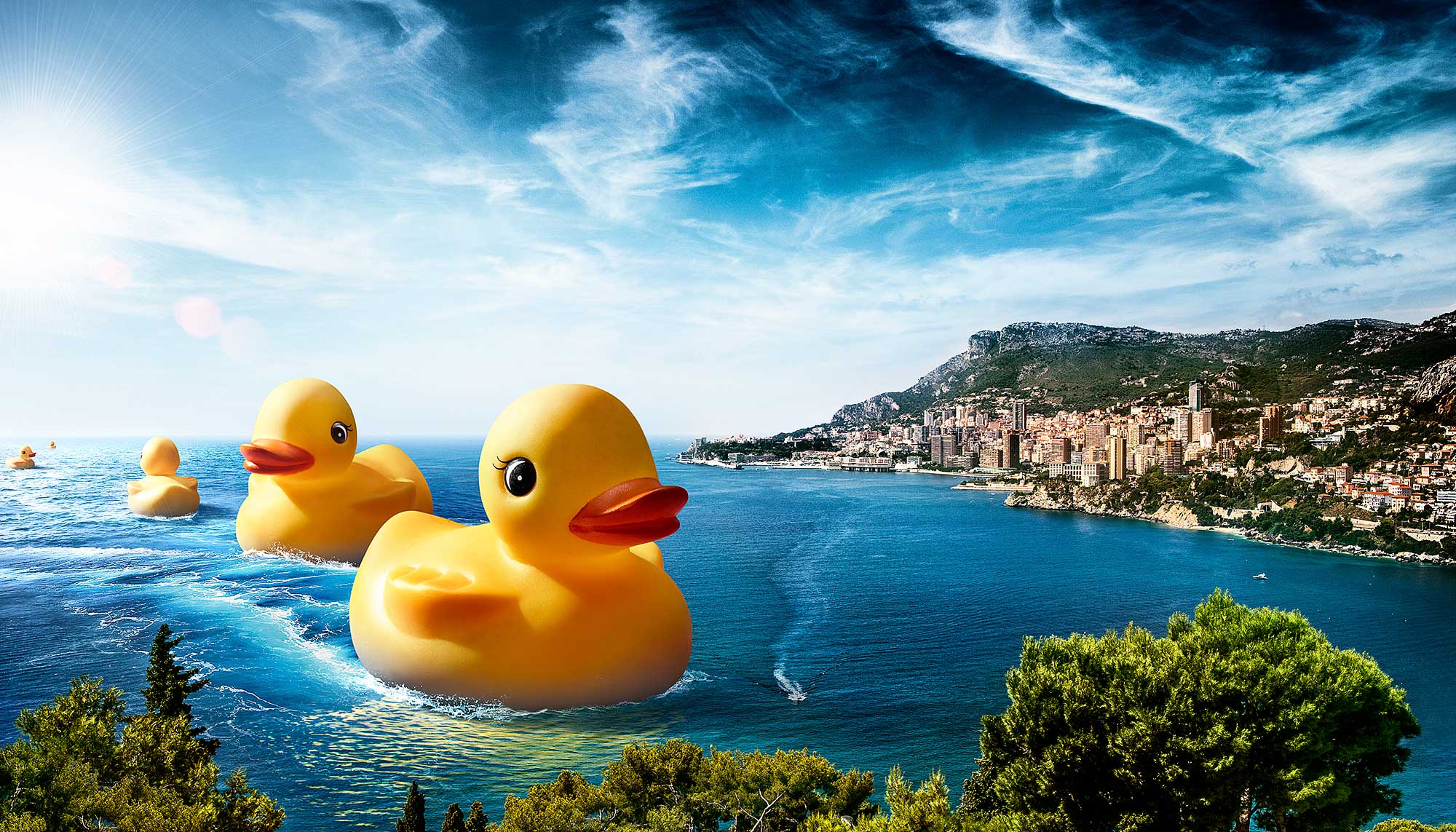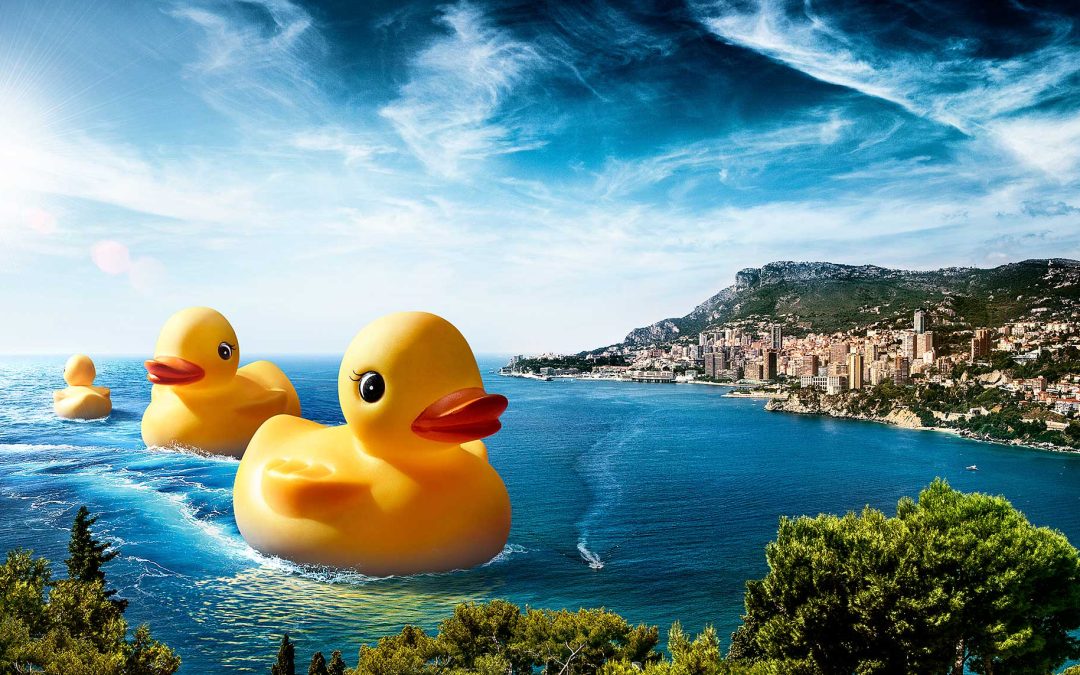28.800 paperelle di gomma gialle
Progetto in 3d cgi ricordando Il 10 gennaio 1992 quando, un mercantile in viaggio dalla Cina all’America venne sorpreso da un tempesta. La furia del mare gettò diversi container in acqua, tra cui una spedizione contenente 28.800 paperelle di gomma gialle.
Visto che ormai la frittata era stata fatta, l’oceanografo Curtis Ebbesmeyer decise di studiare il movimento delle papere di gomma per studiare le correnti oceaniche. I giocattoli avviarono il loro tragitto per la prima volta sulla costa dell’Alaska verso la fine del 1992, a circa 3.200 chilometri dal loro punto di origine.
Ai tempi OSCAR, una simulazione al computer creata da Ebbesmeyer e dal suo collega James Ingraham, basandosi sulla pressione atmosferica e sulla velocità e direzione dei sistemi meteorologici, riuscì a calcolare con precisione la possibile direzioni degli esploratori di gomma. Le paperelle arrivano, un paio d’anni dopo, perfino a nello stato di Washington.
Non solo: alcuni andarono alla deriva verso il Giappone e tornarono in Alaska, mentre altri addirittura si diressero verso lo stretto di Bering dove furono congelati nel ghiaccio artico. Nel 2007, invece, un piccolo gruppetto arrivò sulle coste sud-occidentali del Regno Unito, sbiancati dal tempo ma ancora riconoscibili.
L’incidente venne utilizzato dagli oceanografi di tutto il mondo per conoscere la connessione dei nostri mari. Potrete vedere il loro percorso grazie a un’immagine in calce all’articolo.


